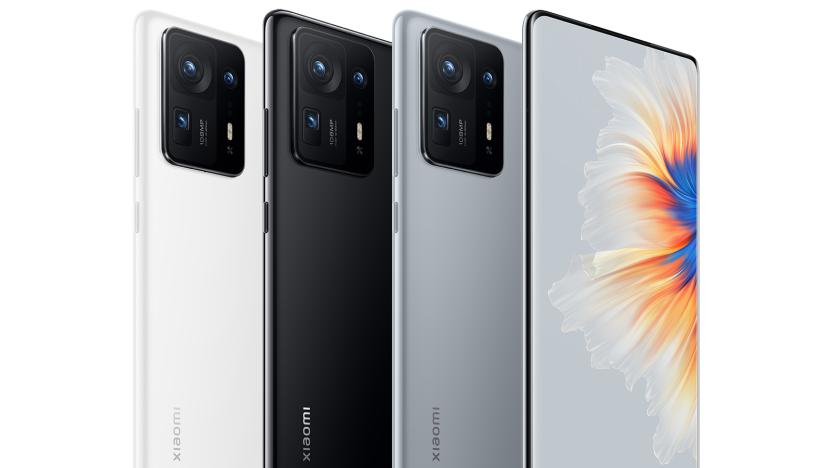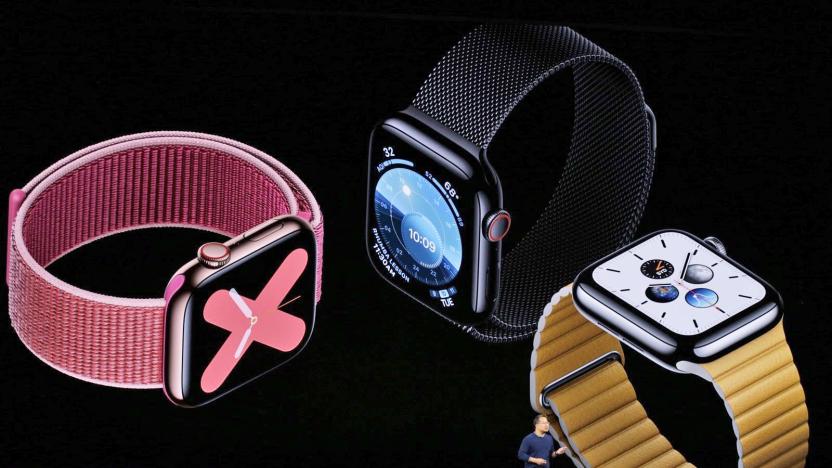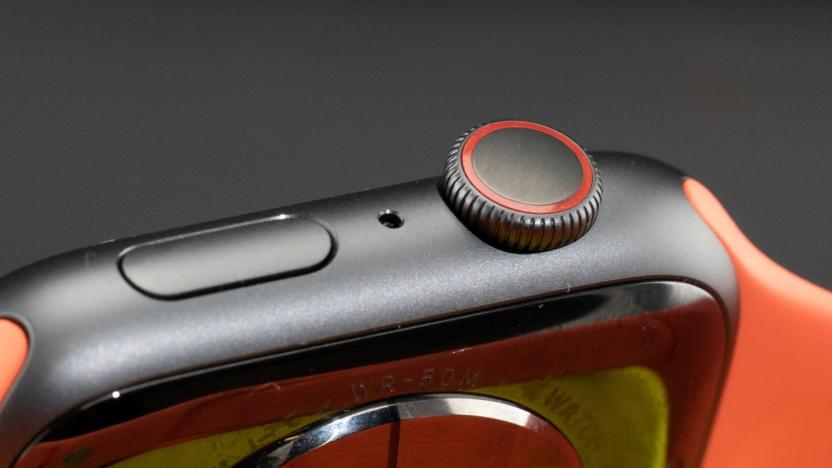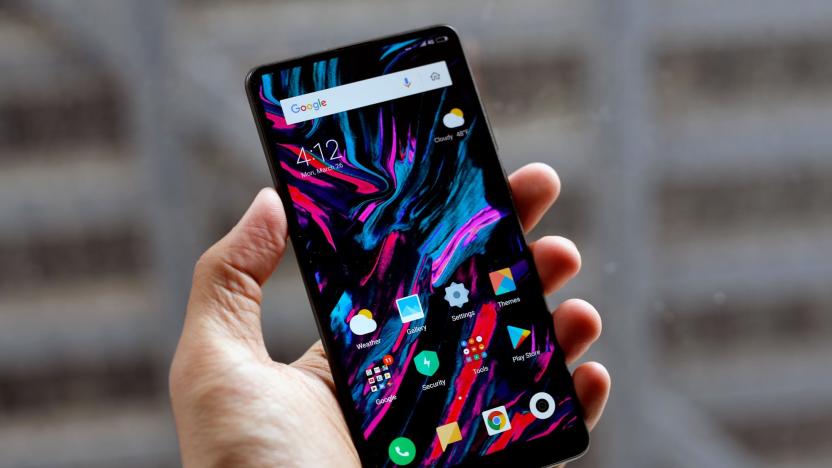ceramic
Latest

ASUS went with ceramic for its new Zenbook 14X OLED laptop
Alongside a slightly larger OLED display and revamped specs, ASUS is testing out a promising new ceramic finish on the 2023 Zenbook 14X.

Xiaomi's Mi Mix 4 packs an under-screen camera in a ceramic body
The Mi Mix 4 is Xiaomi's slimmest ceramic unibody smartphone yet, featuring a 20-megapixel under-screen camera, thanks to advancements in AMOLED production.

Apple adds titanium cases to the Watch lineup
The Apple Watch Series 5, the latest iteration of Apple's popular wearable, will be the first model available with a brushed titanium finish. Apple also announced at today's event that the smartwatch will be available in a ceramic version, as well, after not offering that material with the Series 4 model.

The next Apple Watch may come in titanium and ceramic models
Apple Watch Series 4 appeared to mark the death of the Edition line, but those luxurious models might be ready to come roaring back. iHelp BR said it has discovered animations in the watchOS 6 beta that reference not just the previously rumored return of ceramic models for the next Apple Watch, but a brand new titanium option as well. It's unclear if they would be part of a new Series 5 lineup or just a cosmetic tweak to Series 4, but Apple has historically introduced new materials alongside hardware upgrades.

Xiaomi's Mi Mix 2S is a more powerful take on an already beautiful phone
By now, you probably know exactly what to expect from a smartphone sequel with an S in its name: it'll be faster than its predecessor but its design won't change very much. That's not necessarily a bad thing for Xiaomi's newly announced Mi Mix 2S, though. Even if it isn't dramatically different from last year's Mi Mix 2, it still blends excellent performance with sleek ceramic body and impeccable attention to detail. It's just too bad it'll remain a China exclusive for a while.

Xiaomi's Mi MIX 2 comes with a stunning ceramic unibody
For most of us living outside of China, we tend to be limited to two options when it comes to the choice of materials on our phones: either metal or plastic, or a bit of both (and maybe a touch of wood, if you're lucky). While Essential was grabbing headlines with its titanium device, Xiaomi continued tinkering with something that many others dare not touch: ceramics. Following the Mi MIX, the Chinese smartphone maker has once again collaborated with Philippe Starck's design studio to bring us yet another ceramic device with a near-bezel-less display: the Mi MIX 2.

Hypersonic aircraft are more realistic thanks to a ceramic coating
There are a few reasons why you aren't flying across the country in hypersonic aircraft, but the simplest of them is heat: when you travel at speeds over Mach 5, the ultra-high temperatures (around 3,600F to 5,400F) strip layers from metal. How do you protect a vehicle when even the toughest ceramic tiles can't handle those conditions? A team of British and Chinese researchers might have the answer. They've engineered a carbide-based ceramic coating that's about 12 times more effective than current ceramics, making hypersonic aircraft more realistic.

3D-printed ceramics and metals might finally arrive this year
Remember 3D printing? A couple years ago it was hotly tipped to revolutionize manufacturing, since you could have a whole factory in your home! Except, really, it wouldn't, because spending hundreds or thousands of dollars on a box to make cute plastic doodads wasn't really what most folks wanted. A few years later, having a 3D printer at home is still generally unnecessary, but that may change, and soon. Ish.

Xiaomi's Mi MIX is all about its gorgeous edge-to-edge display
We're used to surprise announcements at Xiaomi events, but this time, it's a rather special one. After showing off the Mi Note 2, the company unveiled the Mi MIX "concept phone" -- one that's headlining with a cool 6.4-inch, edge-to-edge 1080p LCD (even at the top two round corners, and without using the old optical illusion trick). The high-end device also features glossy, full ceramic body and buttons, with no earpiece or proximity sensor, allowing for a cleaner look on the device's top edge. And, naturally, as the flagship phone it has flagship specs. For a moment there, we were wondering why Xiaomi would spend so much time talking about a concept phone, but then, as a final surprise, we learned it's something people will actually be able to buy.

Super-resilient ceramic could be the key to future spacecraft
Vehicles like the Space Shuttle have used ceramic tiles to thwart heat during reentry, but it has its limits. It can only get so hot, which can force you to use different materials -- and you can forget about using near an engine. Russia's Tomsk State University wants to change that. It's developing a ceramic whose multiple layers (based on hafnium carbide, zirconium diboride and zirconium oxide) can survive temperatures over 5,400F (3,000C). Even the best metal alloys can't usually handle more than 3,600F (2,000C), the university says.

Now we can 3D print ceramics
Despite being able to build just about anything with 3D printing, until now items have been limited to polymer plastics, a handful of metals and glass. However, researchers at HRL Laboratories have announced a significant advancement in additive manufacturing: the ability to print ceramics. The trick, the HRL team figured out, was to not heat ceramic powder. Doing so generates too many microscopic flaws that can lead to cracks and fractures. Instead, the team developed a material they're calling "preceramic polymers" that convert to ceramic when heated. Essentially, the HRL team prints out the 3D design using these preceramic polymers and then fires the resulting item (like in a kiln) to harden the material into ceramic.

Predator drones could soon hide under dielectric 'invisibility cloaks'
America's fleet of Predator UAVs could soon become even harder to shoot down (or even detect for that matter) thanks to a new kind of camouflage developed at UC San Diego. UCSD professor Boubacar Kante and his team published their findings last month in the journal Progress In Electromagnetics Research and will submit a separate report to the Department of Defense later this month, according to reports from the Army Times. The material, dubbed the "dielectric metasurface cloak," builds on earlier work from Duke University in 2006. It's essentially a thin layer of Teflon studded with ceramic particles and capable of modulating wavelengths of energy along the electromagnetic scale (including both visible light and radar).

Ricoh invents super-efficient power-producing rubber
No, this is not an image of a delicious Fruit Roll-Up, it's actually a unique new flexible material from Ricoh that can create electricity from pressure and vibration. Dubbed "Energy-Generating Rubber," this piezoelectric mat combines the best features of existing ceramic and polymeric materials; high energy output and flexibility, respectively. In fact, this new rubber produces just as much power as ceramic does while surpassing the flexibility of polymeric materials, according to Ricoh. What's more, it is more easily produced than either existing form of piezoelectric.

Swich proves a wireless phone charger doesn't have to be an eyesore
Wireless smartphone chargers have been around for quite sometime, but they usually forgo attractive aesthetics and any added functionality. Those who prefer a much more attractive option now have one with Swich: an accessory that lifts that handset off of your desk without a tether, keeping all of its buttons accessible while lending a better viewing angle. The units are constructed with sustainable American walnut and ceramics, adding a mirco-suction grip to keep gadgets from slipping while they recharge. The panel on which that daily driver rests also rotates to accommodate both landscape and portrait orientations. Of course, you'll need a Qi-compatible device or a case that adds the functionality, but those unable to pass up dapper design can snag a unit for $170 via Kickstarter.

Fujifilm's flexible Beat speaker diaphragm lets us roll up the rhythm
While there's been no shortage of rollable displays, rollable speakers are rare -- the softness needed for a bendy design is the very thing that would usually neuter the sound. Fujifilm's new Beat diaphragm manages to reconcile those seemingly conflicting requirements. The surface depends on a polymer that stays soft when the surface is being curled or folded, but hardens when subjected to the 20Hz to 20kHz audio range we'd expect from a speaker. Piezoelectric ceramics, in turn, provide the sound itself. The Beat system doesn't have any known customers, but Fujifilm has already shown some creative possibilities such as a folding fan speaker or the portable, retractable unit shown above. If we ever see the day when we tuck a set of speakers into our pockets as neatly as we do our phones, we'll know who to thank.

HTC fixes rare One S chipping finish issue, swaps phones for free
The black HTC One S uses a process called micro arc oxidation (MAO) to harden its aluminum unibody and make it feel like ceramic. We've recently experienced some chipping on the finish of one of our review units, so we reached out to HTC to find out if this is a known problem. Turns out we're not the only ones to report the issue, and while rare, the company's gone ahead and tweaked its manufacturing process and is offering to swap affected phones for free for existing customers. Here's HTC's statement: HTC is committed to delivering a high quality product and great experience for all our customers. There have been a few, isolated reports of this issue. The finish on the One S was laboratory tested as being at a hardness similar to ceramic. While that's hard, it doesn't mean it's impossible to damage. Regardless, HTC takes quality very seriously and are providing all customers with an immediate fix and we are implementing some small changes to ensure customers do not experience this issue in the future.

Pantech breaks the mold with ceramic Vega Racer 2
Late last spring Pantech was making waves with its world-first 1.5 GHz dual-core phone, the Vega Racer. Now, it's introducing its successor, which also claims a mobile first -- a ceramic body (and they don't just mean the color). Apart from the fancy housing, there's a generous 4.8-inch, 720p LCD screen. It's Qualcomm in the engine room again, this time the MSM8960 S4 variant. This offers the same number of cores, but Krait is a much more tantalizing prospect over the aging S3. It also means you can expect LTE along with the usual suspects like WiFi, FM and GPS. If you can't hold out for that other Korean handset, you should be able to part with your Won later this month.

No Comment: The iPhone Megaphone
We've actually seen this megaphone idea implemented before. While it's probably easiest to just go ahead and plug your iPhone in rather than trying to mechanically amplify the sound waves with a series of cones and chambers, that hasn't stopped some designers from putting together some intriguing devices for making your iPhone louder (and clearer?). All that said, we'd like to say this "acoustic horn" manufactured out of ceramic and placed on a walnut tripod was just another jokey accessory, but given how well-designed it looks? We'll just say: No comment.

Kyocera pictures a world of deeply understanding phones
You know what just doesn't understand true feelings enough? Our phones, that's what. But it doesn't always have to be like that if you ask Kyocera. Sure, the company had its dual-screened Echo on display at CTIA, but it also had an interesting exhibit of concept phones, including the ones pictured above, which can change shape based on human emotion. The premise is that since the majority of our communications comes through body language, these handsets would physically morph to express the mental state of your caller. Don't ask us why Kyocera's future just doesn't have better mobile video chatting solutions for that sort of thing, but as you could probably creatively imagine, the black slab on the left would represent a good mood while the one on the far right is clearly all worked up about something. Not zany enough for you? How about some phones that morph in your hand to adapt to how you're holding the device? Okay, that one actually seems pretty awesome, as does the one that looks like a spider web, but we'll let you wrap your heads around the rest of the concepts the company had on display by hitting the gallery below. [Thanks, Evan B.] %Gallery-119646%

Nendo's ceramic circuit board speaker gives the rest of the audio world body image issues
We've seen slick hand-crafted ceramic speakers in the past, but this one millimeter-thick collaboration between potter Mitsuke Masagasu and design firm Nendo is in a different league. An entirely different league. The set is result of the so-called Revalue Nippon Project, created by Japanese footballer Nakata Hidetoshi to revive traditional Japanese art forms. Nakata selected five curators -- in this case the director of the 21st Century Museum of Contemporary Art in Kanazaw -- who were then tasked with pairing a ceramicist and designer to collaborate on a one of a kind form. Not satisfied with simply being 31 times thinner than the emaciated Mythos XTR series as a sole basis for artistic impact, the speaker's ravishing circuit design is also made without a human touch. Instead, a computer-controlled process cuts thin slices from a ceramic substrate slab, fixes them with mercury vapor, and then mounts them via a robotic arm. Amazingly, sound quality is still also touted as being top notch. There are no plans however for these speakers to ever be mass produced, so if you were hoping to snag one as the ultimate accessory for your über-modern flat... well, let yourself down easy, alright champ? %Gallery-108170%









